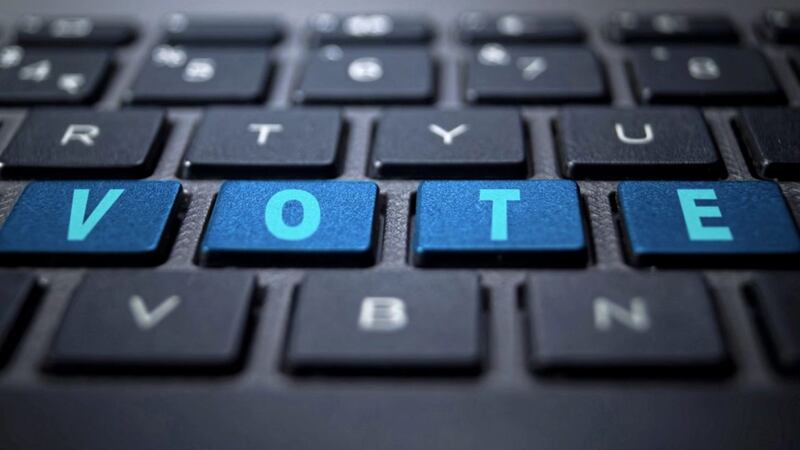'It’s the Sun wot won it' was the brazen post-election headline which boldly conveyed the impact the print media had on the General Election of 1992, and now, some 27 years on a cultural shift sees the ubiquitous 'social media' firmly at the centre of this battleground.
As we sit in the mouth of an election and enter into what digital experts are tipping to be a landmark year for social media, it seems appropriate to see where the short-term future lies within this ever-evolving sphere, and how its impact will be felt across wider civic society.
Throughout the modern ages, different media forms have risen and fallen, whist others have been ingrained in our everyday lives, since their very inception.
In this time, we’ve experienced seminal moments including; the post-network era, more recently the post-truth era, and as we look ahead to 2020, some are describing our current trajectory as heading toward the post-social media era.
However, let’s be clear, social media isn’t going anywhere, rather its discourse looks set to shift as it grows and becomes increasingly present in almost every facet of our daily lives.
The fallout from high profile moments including; Cambridge Analytica, well publicised data leaks and the spread of ‘fake news’ has undoubtedly shifted the axis of trust within the corporate, political and public worlds. However, as we close in on a General Election, substantial increases in digital ad spending show that platforms including Facebook and Twitter remain valued as the primary vehicles to communicate with the electorate and garner political trust.
Trust is a core pillar across social media and can be evidenced through the correlation of content engagement and electoral success for political parties. Contemporary evidence suggests when looking at the landscape, different platforms attract different political demographics. For example, research shows people who engage politically on Twitter are more likely to support Labour than the population at large, while Facebook users are found to be more evenly distributed along the political spectrum, leaving Instagram as new and fertile land for parties this time around.
Key to Instagram are the profiles we know as ‘social media influencers’, who dominate our screens, populating feeds and stories with product placements and brand partnerships. However, as we look beyond the consumer world, we are now seeing an increased role for Instagram and its influencers in the political arena. The channel, described as being; ‘free from viral abuse’, has become a preferred platform for politicians to show off their ‘human side’ and interact with young, dynamic audiences.
Looking specifically at influencers, macro influencers, with a following above 20k are now experiencing a recurring decrease in engagement rates, pushing brands closer to nano and micro influencers, for a more organic and community-based experience. Whilst this trend bodes well for grassroots political campaigning, influencer star power should not be ignored, with the likes of Lily Allen regularly leveraging Instagram stories to deliver political messaging to some 1.4m followers.
This trend of utilising Instagram alongside Facebook and Twitter for political gains looks set to grow as parties try to create bespoke and relatable content which works for smaller, more localised audiences.
Further afield, in the United States, NBC recently reported that memes and videos are set to become dominant election forms in 2020, meaning Instagram, by far the most popular photo centric app, will be a particularly crucial battleground for election manipulation efforts.
Like in the corporate world, the consumer world has been impacted by various high-profile scandals involving brand partnerships, with Instagram committing to ‘coming down hard’ on those who breach their advertising codes, and perhaps as the relationship between platforms and politics further extends, we will see parties move increasingly into this populist, influencer world.
Having come under strong criticism for its 'idealistic' and 'airbrushed' persona, Instagram has recently started rolling out its ‘hidden likes’ project to remove ‘instant gratification’ and to ‘depressurise people’ on the platform. It remains to be seen how this will impact the political sphere, however, it’s welcoming that users now seem to be an increasing driving force behind these changes, demonstrating a humanistic acknowledgement from big tech in this divisive age of politicking.
Looking ahead at trends, the next twelve months will see ephemeral content grow substantially, with major social platforms now pushing this type of content which is available only for a short duration and disappears afterwards. Cursory glances across Twitter, Facebook and YouTube now reflect this trend, following that led by increasingly popular Instagram stories introduced in 2016.
At a local level the main political parties are now ever present on ‘stories’, cognisant of the high engagement levels they can exploit when communicating activities from canvasing, to sharing speeches to unveiling party manifestos. We can expect to see this content ramped up significantly in the coming weeks as we head for the polls on December 12th.
In all of this, it would be remiss to exclude traditional media which not only continues to play a pivotal role, but is also diversifying and adapting in many ways, paving a sustainable future for the years ahead. Recent Ofcom results show that 77% of people say traditional media was still influential in helping them make informed decisions and showing on average people are twice as likely to trust it, as they are social media. ‘Print’ as a homogeneous format may have lost much of its influence, however, the media’s role in populating and informing our newsfeeds is as crucial as ever.
This year saw the 30th anniversary of the internet and Tim Berners-Lee recently talked about the journey of this phenomenon, stating: “Given there are more webpages than there are neurons in your brain, it’s a complicated thing.”
The platform is awash with information relating to every conceivable popular thought and theory, with thousands of political blogs, webpages and videos vying for the attention of the masses, particularly at election times.
This upcoming General Election will be the first where parties will publish transparency data relating to political advertisements on social platforms including; who is paying for them, and the amounts being spent. This is a welcome measure, with the integrity of social platforms undoubtedly at stake. The defence from Mark Zuckerberg that the likes of Facebook is just a platform, not a publisher will no longer suffice in quelling public mistrust following scandals including, ‘dark money’ and Russian electoral interference the US.
Moves from Twitter to ban paid political ads may provide some assurance to those who question the ethics and morality of social media and big data, and as we head closer to elections both near to home and across the Atlantic, we will see just how central a role social media plays in influencing the voting public once more.
It is said that “the only constant is change”, and as we embark upon 2020, it looks like we are set for a period of significant evolution for social media in the political and public spheres. Intriguing times ahead!
Claire Aiken is managing director of public relations and public affairs company Aiken
Next week: Richard Ramsey







